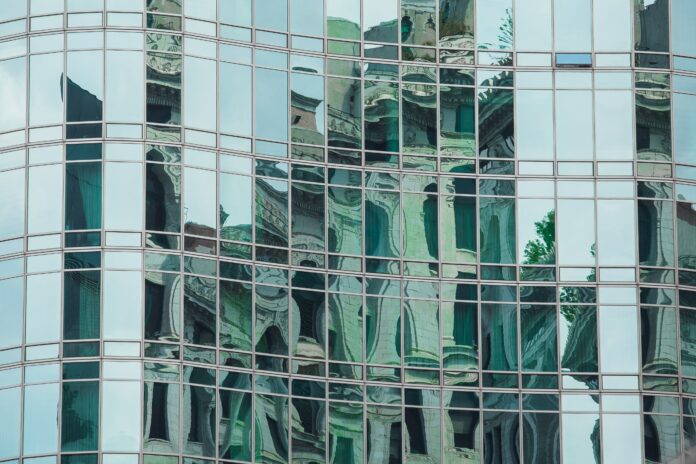With scientists cautioning against the impending threat of climate change, the push for sustainability has become a mainstream topic in today’s media. From smaller-scale changes like reusable straws to huge industry shifts like the rapid production of electric cars over gas-powered cars, the world is embracing sustainability. However, one of the biggest issues and one that has been somewhat slow to advance is housing. Especially so in major cities where resources are limited, like New York.
But the fact remains, buildings are one of the greatest emission sources in the world, but especially here, where an estimated 67% of city emissions were attributed to buildings in 2017. Between lighting, cooling, heating, and outdated systems, and inefficient methods, such as lack of insulation and leaving lights on all night despite offices being empty, the issue is only growing.
The New Energy Plan
A recent push gaining momentum is Mayor Bill De Blasio and his administration in support of banning gas, including natural gas used in buildings. The alternative energy would be electric, and the proposition is making its way through City Council. These initiatives fall in line with De Blasio’s ambitious goal of banning all fossil fuel hookups in new buildings by 2030. But with an estimated 40% of New York City’s carbon emissions coming from carbon fossil fuels, the path forward isn’t an easy one.
Many new buildings in New York City have already taken a sustainable approach, and the new energy plan will not have an effect. Architecture schools have begun to embrace the future, and many are training students in the sustainable building model, which is a great step in training the next wave of designers. Additionally, there are programs like LEED, which is a worldwide program known as Leadership in Energy and Environmental Design.
LEED is the foundational green building rating system and certifies buildings that have exceptionally intertwined sustainability and design. With LEED certification, architects, builders, and building owners can be eligible for significant tax breaks, building grants, the ability to charge higher rents because of the higher property value, and more. For example, One57 in Manhattan’s Theater District is an example of a building that is beautiful, world-classand LEED-certified with apartments listed for millions of dollars. So there is a major incentive for new builds to be as environmentally friendly as possible in New York City. But the new wave begs the question, what about the pre-existing buildings? How can they adapt to this renewable push when they were built decades, if not a century ago?
Opposers of the Renewable Energy Timeline
Those that oppose the bill are asking the question of whether a place as dynamic as New York can handle the shift. Many representatives in real estate are not fans of the shift, stating that the changes and upgrades will become tenant responsibilities. James Whelan, president of the Real Estate Board of New York, is open to greener changes, but he cautions against the rushed timeline De Blasio has set forth when compared to the Climate Action Council’s five-year phase for sing-family homes and ten years for commercial and multi-family buildings.
More specifically, The Real Estate Board of New York suggests the alternative of phasing the ban so that it directly coincides with “the offshore wind and other-large-scale renewable transmission projects,” according to The Real Deal. This means rather than an all-encompassing ban beginning on x date, the first group of buildings affected by the gas ban would be three-story or smaller commercial buildings and single-family homes by 2025. Next are buildings up to ten stories by 2027 and lastly ten stories or taller by 2030. A major concern advocated for by opposers is the rush to switch to electricity, inevitably resulting in reliance on “dirty electric.” Only 28% of electricity in New York came from renewable sources as of last year, meaning over 70% did not. With a rush for everyone to use electricity, it seems to be trading one non-renewable source for another.
Additionally, Mark Chambers, the Director of the Mayor’s Office of Sustainability, estimates that green updates can exceed $4 billion amongst all city building owners. Chambers goes on to say, “This legislation ignores these ongoing substantive discussions and instead puts forward a fundamentally flawed proposal that would upend the lives of millions of residents across New York City and significantly increase costs for homeowners and renters.”
Past New York City Energy Initiatives
The city has come a long way in its efforts to reduce greenhouse gas emissions in a short amount of time. Previous proposals included caps on how much a building could emit on any given year or pay a fine for their overage. Mayor Bill de Blasio previously backed this bill in 2019. According to this New York Times article, the goal was to cap a single building’s emissions of carbon dioxide per square foot at 4.53 kilograms.
If the building went over, they had to pay a fine, which would vary depending on how much they exceeded the threshold. For reference, the Emprise State Building emitted roughly 6.27 kilograms of CO2 per square foot annually, so their fines, and fines for other large buildings, could reach into the hundreds of thousands or millions. However, the city is moving past the tolerance stage for emissions and is now seeking complete riddance with it.
Other Cities Initiatives
Though a major challenge, it is not impossible. Other municipalities across the country have modeled the shift to renewable energy sources for years now. Berkeley, California, was the first city to ban natural gas hookups back in 2019. Seattle followed suit in early 2021 when they banned new buildings over four stories from utilizing natural gas. This means newer apartment and office buildings must utilize electricity to power their space and provide for tenants.
The administration is hoping to pass the measure, or some version of it, by the end of Mayor de Blasio’s mayoral term, set for December 31st, 2021.
Kylee was born and raised just outside of Sacramento in a small town full of history and charm. She stays up-to-date on the real estate market and hopes to empower hopeful buyers and sellers to make the best decisions for themselves. Kylee is particularly interested in bridging the gap for younger generations, helping them understand the power of owning and investing in real estate.



